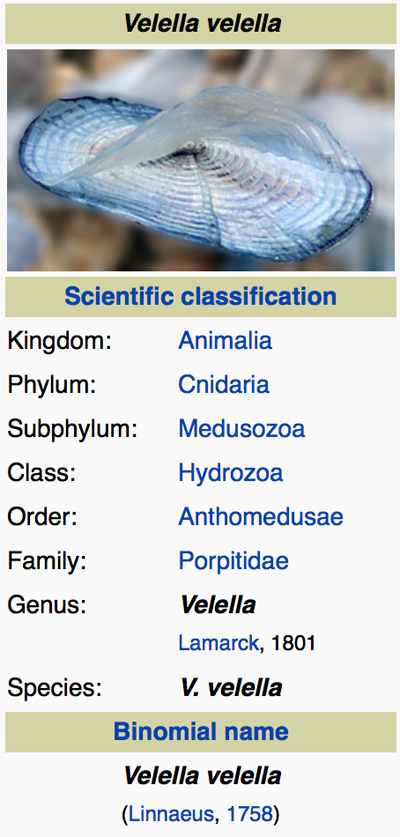Since the middle of July, millions of small, delicate, blue creatures have washed ashore along the Northern California coastline. They can be found clustered together at the high tide line on many beaches as far north as Oregon.
 The creatures, called Velella, are free-floating hydrozoans which live offshore and on the surface of the water. Velella are dependent on winds which push them along, and use their small crest running along them which acts like a sail. They’re sometimes called sea rafts, by-the-wind sailors, purple sails, little sails, or simply Velella. Having no means of locomotion other than their single sail, Velella are at the mercy of prevailing winds for moving around the seas, and are thereby also subject to mass-strandings on beaches throughout the world. This appears to be what is happening in California, and they can be found on beaches as far north to the Oregon border.
The creatures, called Velella, are free-floating hydrozoans which live offshore and on the surface of the water. Velella are dependent on winds which push them along, and use their small crest running along them which acts like a sail. They’re sometimes called sea rafts, by-the-wind sailors, purple sails, little sails, or simply Velella. Having no means of locomotion other than their single sail, Velella are at the mercy of prevailing winds for moving around the seas, and are thereby also subject to mass-strandings on beaches throughout the world. This appears to be what is happening in California, and they can be found on beaches as far north to the Oregon border.
For years, such sightings of Velella have prompted different concerns and reactions. In 2002, when millions of the animals clumped up along the Bay Area coastline, the U.S. Coast Guard feared that there might have been an oil spill offshore. It has been several years had passed since a similar event in Northern California.
One thing’s clear: A velella can’t survive on the beach for very long. If they get washed on shore and the next wave draws them back out, they’ll probably survive. Since they have no mechanism to retain water, they’re likely to die within an hour or two if washed ashore.Unlike jellyfish, the velella does not go underwater. Instead, it uses its tentacles to reach down and capture things to eat.
If you’re out diving, take a look in the sand at the water’s edge and you may have a chance to see these beautiful, but stranded, creatures.

